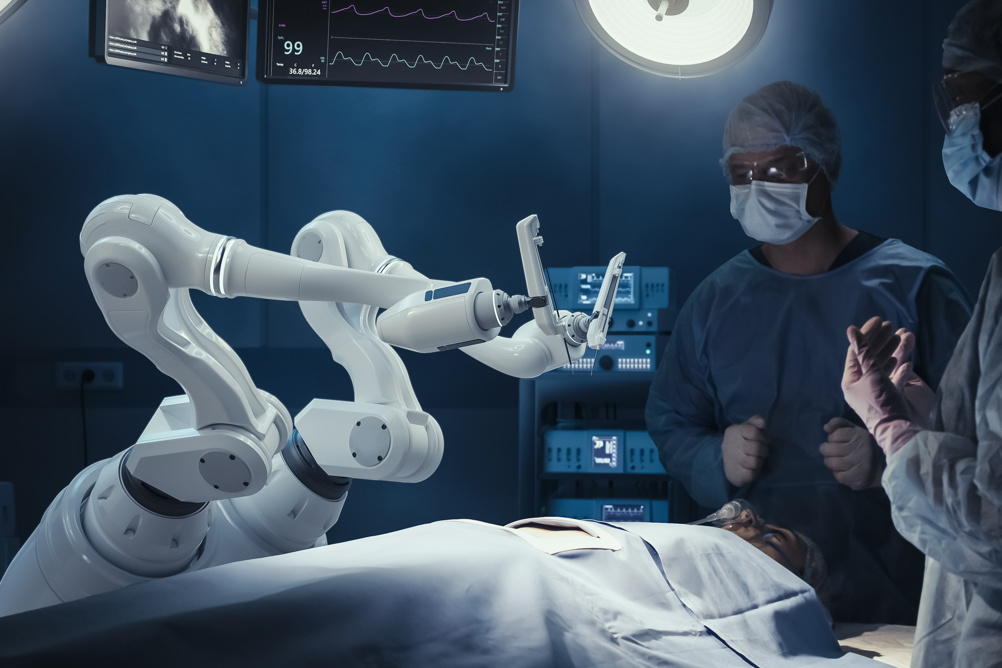
Robots will be helping perform half a million surgeries every year by 2035, according to the NHS. A new initiative from the Government to cut waiting times includes utilising robots to support a number of different surgeries. Within the next decade, nine out of ten keyhole surgeries are aimed to be assisted by robots, including organ removal for cancer. The NHS also intends to use them for emergency surgeries, and ultimately to shorten the procedure waiting list.
‘Innovative treatments and technologies that help fast track better outcomes for patients is how we transform our NHS and make it fit for the future,’ said Health and Social Care Secretary Wes Streeting. ‘Whether it’s robotic surgery, our new health data research service to accelerate the development of new medicines, or announcing new artificial intelligence that detects skin cancer, our Plan for Change is driving forward new ways to help cut waiting lists and get patients treated on time again.’
- How the NHS is embracing the AI revolution
- New DNA sequencing system to cut bacterial infection diagnosis ‘from weeks to just two days’
- First artificial intelligence trial to tackle breast cancer launched
Institutions that have already utilised the technology claim that the robot-assisted surgeries are more precise than traditional keyhole surgeries performed by human hands alone. Surgeons will be able to control the robotic console to perform the surgery, with the help of a 3D camera. Patients who have undergone robot-assisted surgery have been found to heal faster and spend less time in hospitals, with The Northern Care Alliance reporting that bladder surgery patients were discharged within five days, compared to the regular five to ten days.
‘The NHS has pledged to return to shorter elective waiting times by 2029 and we are using every tool at our disposal to ensure patients get the best possible treatment,’ said NHS Chief Executive Sir Jim Mackey. ‘Expanding the use of new and exciting tech such as robotic surgery will play a huge part in this. Not only does it speed up the number of procedures the NHS can do, but it also means better outcomes, a faster recovery and shorter hospital stays for patients.’
Surgical robots have been unveiled across England, with thousands of patients already reaping the benefits. Southmead Hospital in Bristol was the first hospital in the South West to possess the first gynaecological surgery robot, Da Vinci Xi, in May earlier this year. Southmead has already seen 9,000 robot-assisted procedures to date, with the new bot allowing them to perform over a hundred more each year.
‘Robot-assisted surgery is a perfect example of innovation improving patients’ care and transforming the way the NHS works,’ said John McGrath, consultant surgeon at North Bristol NHS Trust. ‘Robot-assisted surgery can also make complex operations less physically demanding for surgeons, with the potential to reduce strain on surgical teams, allowing a greater number of complex surgeries to be carried out each day.’
